-
Posts
115,774 -
Joined
-
Last visited
-
Days Won
588
Content Type
Profiles
Forums
Events
Posts posted by RETIREDFAN1
-
-
-
Astronomy Cake

-
15 FACTS ABOUT NORMAN ROCKWELL
1. Norman Rockwell (1894-1978) is celebrated as a champion of small-town America
- But his real interest lay elsewhere — in the private moments we all share but often take for granted. ‘Without thinking too much about it in specific terms, I was showing the America I knew and observed to others who might not have noticed,’ Rockwell said.
2. Rockwell’s early life was cosmopolitan
- Born in New York in 1894, Norman Rockwell studied art in the city until the age of 21 when his family moved to the artists’ colony of New Rochelle, New York. Only in 1939 did he move with his first wife to tiny Arlington, Vermont, encouraging his interest in small-town values.
3. Rockwell’s eye for detail made him a master storyteller
- This stemmed partly from his grounding in commercial design. Rockwell had wanted to be an artist from an early age, and after gaining entry to the New York School of Art and the National Academy of Design, he went on to the Art Students League, where he studied illustration. He won his first commission — for a set of Christmas cards — before his 16th birthday.
4. Rockwell also had a grounding in the history of European art
- Look closely at many of his works and you will find allusions to the Masters. Even the pose of wartime Saturday Evening Post cover girl Rosie the Riveter nods to Michelangelo’s Sistine Chapel portrayal of the Prophet Isaiah.
5. Rockwell’s career began in the ‘Golden Age of Illustration’
- While still in his teens, Rockwell was appointed art director of Boy’s Life, the official magazine of the Boy Scouts of America. The period from the late 19th century to the 1920s is seen as a high point for book and magazine art.
6. His most productive relationship was with The Saturday Evening Post
- Rockwell painted his first cover in 1916 and over 47 years, he is believed to have provided 321 covers for one of the country’s most popular publications, such as his seasonal special Extra Good Boys and Girls. The artist described the magazine as the ‘greatest shop window in America’ and through his work with the Post, Rockwell became a celebrity in his own right.
Rockwell’s The Rookie (Red Sox Locker Room) — painted in 1957 as the 2 March cover for the Post — realised $22,565,000 at Christie’s in May 2014. In November 2015, Norman Rockwell Visits a Country Editor, which was painted for the 25 May 1946 issue of the same publication, sold for $11,589,000.
7. Humour was a key element in Rockwell’s work
- Not least during the war years. ‘During a time of such suffering and loss, Rockwell knew how important it was to keep people’s spirits up,’ explains Laurie Norton Moffatt, Director/CEO of the Norman Rockwell Museum.
8. In 1953 Rockwell moved to Stockbridge, Massachusetts
- Stockbridge was a quintessential New England town in the idyllic Berkshires. He lent works to the Norman Rockwell Museum, established there in 1969. Four years later, he created a trust to preserve his legacy, entrusting his works to the institution. In 1977 he did the same with his studio and its contents.
9. Some of Rockwell’s best work emerged when he suffered from bouts of depression
- While best known for an optimistic view of human nature, some of his most poignant pieces come from the 1950s, when he was suffering most. As Moffatt notes, ‘His second wife also suffered from depression before she died in 1959.’
10. Rockwell was sidelined by critics during the heights of Modernism
- If Rockwell felt least understood during the Abstract Expressionist movement, he had a sense of humour about it, creating paintings such as The Connoisseur — a work that features an uncannily accurate take on a Jackson Pollock drip painting.
11. Rockwell painted portraits of five presidents
- Dwight D. Eisenhower, John F. Kennedy, Lyndon B. Johnson, Richard Nixon and Ronald Reagan were all painted by Rockwell. Upon presenting the Presidential Medal of Freedom to Rockwell in 1977, President Gerald Ford remarked: ‘Artist, illustrator and author, Norman Rockwell has portrayed the American scene with unrivalled freshness and clarity. Insight, optimism and good humour are the hallmarks of his artistic style. His vivid and affectionate portraits of our country and ourselves have become a beloved part of the American tradition.’
12. Rockwell died at his home in 1978
- Rockwell passed away at the age 84. In its obituary, The New York Times described Stockbridge as a ‘picturesque village in the Berkshires that could well have been designed by Mr. Rockwell himself — because guileless New Englanders were the best models for the ideas he wanted to portray’. In 2008, Rockwell was named the official state artist of Massachusetts.
13. Rockwell’s high-profile admirers include John Updike
- While Rockwell’s work has remained popular, he has become better appreciated through admirers such as the celebrated author and sometime art critic. In 2008, Updike told the National Endowment for the Humanities, ‘He was an artist, a real artist in that he went beyond the requirements... I think Rockwell is the stand-out in an age of great illustrators, because he never settled for a formula.’
14. Steven Spielberg and George Lucas are avid collectors of Rockwell’s work
- It is perhaps not surprising that two of the world’s best-known filmmakers should be fans, Moffatt says, because ‘[Rockwell] too was such an accomplished and humane storyteller.’
15. In recent years, Rockwell’s market has been stronger than ever
- Prices for Rockwell’s work rebounded much more quickly from the 2008 downturn than those of other artists. Since then, buyers have been attracted by fresh scholarship, particularly surrounding the blockbuster 2010 exhibition Telling Stories at the Smithsonian American Art Museum in Washington, D.C., which drew from the collections of Spielberg and Lucas.
Please feel free to share!
-AJ Hunsicker
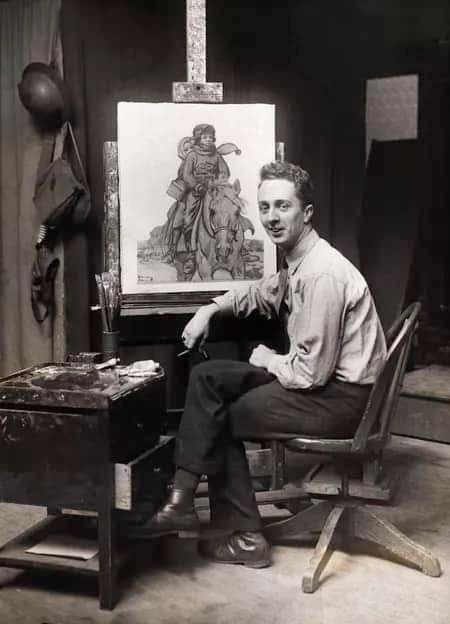
-
-
The world's first Cruise Liner 🛳 constructed by the ancient Greek Archimedes.
Archimedes (287-212 BCE) was a Greek mathematician and mechanical engineer, a pioneer in both fields, many centuries ahead of his contemporaries.
In Sicily, under the ruling of the king Hiero II of Syracuse (270 – 215 BCE), a ship with stunning dimensions was built. The material used for the construction of that giant boat equated to the material for 60 regular ships. What was more, that vessel was meant to leave the secure coastal lanes and to cross the Mediterranean Sea. The ship was given a name – Syracusia – and represented what could be called “the first liner of antiquity.”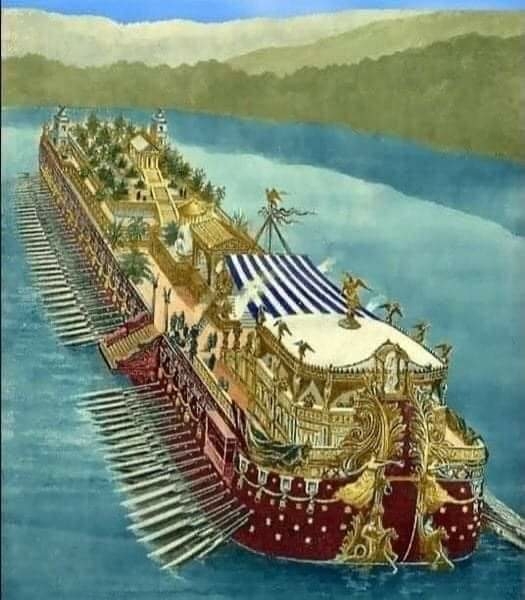
-
 Happy birthday Rome. Rome was founded on 21 April 753BC.
Happy birthday Rome. Rome was founded on 21 April 753BC.
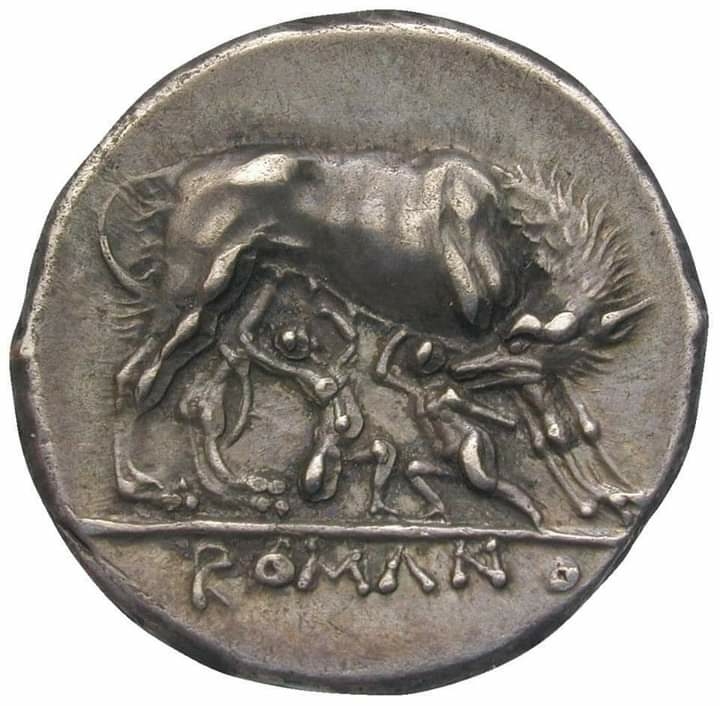
-
-
-
What actors have retired from acting only to make a comeback decades later to stun audiences with their performance in a movie?
Jackie Earle Haley reluctantly “retired” from acting in his early 30s, after years of being offered fewer and fewer roles, in projects of increasingly poor quality. He had made a name for himself first as a child, then an adolescent in films like The Day of the Locust, The Bad News Bears, and Breaking Away.But puberty was not kind to him — he developed severe acne that left him with noticeable facial scarring, began losing his hair while still in his 20's, and never grew past 5′5″. So the roles dried up, even though the talent was still there.
At 14 in The Bad News Bears:
Haley ultimately left his native California for San Antonio, Texas, where he started his own successful production company, producing and directing local television commercials. Eventually he made peace with his acting career being over, and after two failed marriages, met the love of his life, Amelia Cruz.
He and Amelia were on their honeymoon in Paris in 2004 when he got a call from director Steven Zaillian, who was directing a remake of the film All the King's Men starring Sean Penn. Penn, who had done a play with Haley in the early 80's, thought he'd be perfect for the role of the main character's driver-slash-bodyguard. So he requested that Haley, then 43, be tracked down.
The film itself was not especially successful, but Haley's performance, in a small but crucial role, was praised. Haley’s other costar Kate Winslet suggested that he audition for her next film, 2006’s Little Children. He sent in an audition tape for the role of Ronnie McGorvey, a paroled sex offender, and landed the part.
As Ronnie in Little Children:
His absolutely stunning performance as the tormented Ronnie earned him an Oscar nomination, along with a boatload of other awards and nominations. It also reignited his acting career — since Little Children, Haley has appeared in numerous films, including Shutter Island, Lincoln, and Watchmen, and become one of our most reliable character actors.
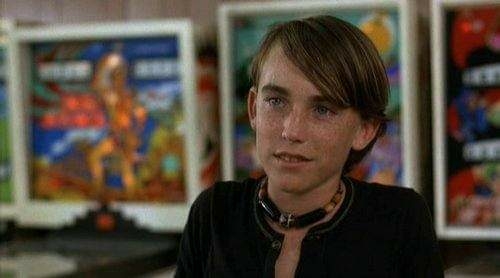
-
The Destruction of Egypt is When The Exodus of the Israelites Happened
All pieces of evidence point to the Exodus of the Israelites just prior to the Hyksos invasion around 1700 BCE (conventional dating). First if we look at the Biblical text it clearly says that the plagues caused chaos and ruin in Egypt. In Exodus 10:7 before the plague of hail Pharaoh’s officials say to Pharaoh:
“How long will this man be a snare to us? Let the people go, so that they may worship the Lord their God. Do you not yet realize that Egypt is ruined?”
So we need to look for a time when Egypt was in ruin to place the proper time for the Exodus.
If we look at the 3rd century BCE the Egyptian historian Manetho writes just prior to the Hyksos invasion
Tutimaeus [0]. In his reign, for what cause I know not, a blast of God smote us; and unexpectedly, from the regions of the East, invaders of obscure race marched in confidence of victory against our land. By main force they easily overpowered the rulers of the land, they then burned our cities ruthlessly, razed to the ground the temples of the gods, and treated all the natives with a cruel hostility, massacring some and leading into slavery the wives and children of others.
Tutimaeus is the 13th dynasty pharaoh Dudimose in Greek. Manetho’s original work on the history of Egypt was in Greek for the Ptolemy pharaohs in Alexandria. It is clear form his text that some terrible catastrophe happened to Egypt in the reign of Dudimose by God in the singular and this allowed the Hyksos to invade and even conquer Egypt without “striking a blow” This is another indicator that the destruction of Egypt recorded in the Hebrew Bible occurred before the Hyksos invasion.
The other piece of evidence is the Ipuwer Papyrus dated by the scholar John Van Seters to the end of the 13th dynasty just prior to the Hyksos invasion. In it is recorded a destruction o f Egypt such as
2:5–6 Plague is throughout the land. Blood is everywhere.
2:10 The river is blood.
2:10 Men shrink from tasting — human beings, and thirst after water
3:10–13 That is our water! That is our happiness! What shall we do in respect thereof? All is ruin.
In addition are these passages:
5:5 All animals, their hearts weep. Cattle moan…
9:2–3 Behold, cattle are left to stray, and there is none to gather them together.
4:3 (5:6) Forsooth, the children of princes are dashed against the walls.
6:12 Forsooth, the children of princes are cast out in the streets.
6:3 The prison is ruined.
2:13 He who places his brother in the ground is everywhere.
3:14 It is groaning throughout the land, mingled with lamentations
There have been many who have written about the parallels between the Ipuwer papyrus and the plagues of the Hebrew Bible. But that is not my intent here. Rather it is to show that the papyrus points to a time of destruction of Egypt.
In addition because of this destruction of Egypt the Asiatics in the North in Canaan know of it and there is a fear of invasion as it says:
15:1 The Asiatics know the condition of the land
There are some scholars today who doubt that the Hyksos invaded Egypt. However they come to this conclusion because there does not seem to be a destruction layer in the pre-Hyksos or the Hyksos period. But Manetho himself says the Hyksos were able to invade Egypt without “striking a blow” So it would make sense why there is no real destruction layer. In addition Dr. Manfred Bietak the main archaeologist of Avaris which is the area of Goshen of the Bible has found many warrior burials in stratum F which he dates to the early Hyksos period. Dr. Bietak writes
“During this period, many of the tombs belonged to warriors who were normally equipped with a dagger and battle axe” (1)
Because there were many warriors buried at this time it seems to indicate some type of invading army. Dr. Bietak also writes about these warrior burials that many included the burial or a servant alongside the warrior. As he writes
“servants were interred in front of tomb chambers of some tombs in stratum F. These servants were girls with strong bones. It appears that they were buried at the same time as their masters” (2)
This is reminiscent of Manetho who wrote concerning the Hyksos
“and treated all the natives with a cruel hostility, massacring some and leading into slavery the wives and children of others.”
The last piece of evidence pointing to this destruction by the Hyksos as the time for the plagues of the Exodus which devastated Egypt is from the writings of the 18th dynasty pharaoh Hatshepsut. It appears in the text of Speos Artemidos. It is written there
“I have restored what was destroyed. I raised up what was formerly shattered, since Asiatics were in the midst of the Delta (at) Avaris when the nomads in their midst were destroying what had been made” (3)
From these words it seems the Asiatics i.e. the Hyksos destroyed Egypt or came into Egypt when it was destroyed. Again meaning there was destruction of Egypt both before and during the Hyksos being in the delta.
All of this points to a time when Egypt was destroyed, which is at the end of the 13th dynasty just prior to the Hyksos invasion. It was this destruction that allowed the Hyksos to invade and conquer Egypt without meeting any real resistance on the part of the Egyptian army. The reason for this was that they had been decimated by the plagues of Egypt and much of the Egyptian army was destroyed in the Sea of Reeds. This time period fits the story of the Exodus as found in the Hebrew Bible.
Bietak, Manfred “Avaris, The Capital of the Hyksos” 1996 Pg. 45
Ibid
Redford, Donald “Textual Sources for the Hyksos Period” Pg. 17 in “The Hyksos: New Historical and Archaeological Perspectives”, Eliezer D. Oren, editor 1997
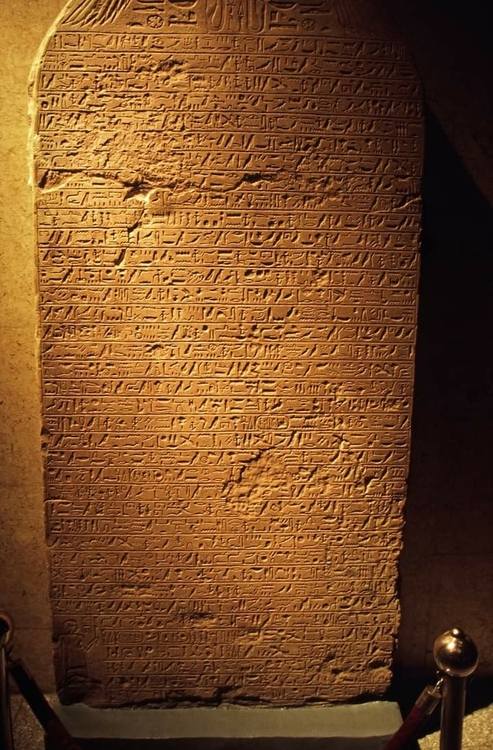
-
-
-
-
Cue @DannyZuco in 5.....4.....3.....2.....1......
-
The establishment Goppers feel the same way......lol
-
-
-
-
Becoming Complete
We’ve been studying the letter Paul wrote to the congregation in Corinth. From our studies, we see that he had a stormy relationship with those brethren. Paul had started the congregation there on his second missionary journey while preaching to the Gentiles in Europe.
Acts 18 1 - 11
He didn’t leave them hanging out to dry. He paid two more return visits to Corinth.
II Corinthians 13: 1
As we’ve been studying in our morning Bible Class, the congregation in Corinth had many sins and other problems that Paul worked hard to help them get rid of.
I Corinthians 3: 1 - 3
II Corinthians 12: 20 - 21
He struggled long and hard with them to get them to repent and take care of the sin in their midst. In his conclusion to the second letter, he gave them a short, friendly farewell. This farewell, if they paid attention to it, would help in mending their congregation. Though Paul was bidding them farewell, he was giving them the keys to being a people pleasing to God.
II Corinthians 13: 11
Today, we want to look at Paul’s farewell message to the Corinthians and see what will make any congregation of the Lord’s people to mend their ways and become a true, united congregation of the Lord’s Church.
First, Paul told the Corinthian brethren to rejoice. This is a theme of his letter to the Philippians.
Philippians 4: 4
When we have joy in our hearts, we rejoice. The action of rejoicing is a command as well as a promised blessing. However, we must always remember that joy and happiness are not always the same thing. Happiness is caused by good outward circumstances. If things are going well for us in the physical world around us, we are happy. If things are going badly for us in the physical world, we are not happy.
Joy, on the other hand, comes from inside of us. Joy comes no matter what is happening to us on the outside. One of the great blessings that we have in Christ is joy. This is the feeling that no matter what problems or difficulties we are facing in our lives, Christ is with us and we have nothing to fear. This means that we can face those problems with joy in our hearts. It is our duty as Christians to rejoice in all of life’s trials and tribulations. We may be killed for our faith, but in and through Christ, we are always going to be victorious in the end.
Romans 8: 31 - 39
Knowing that not even death can separate a faithfully obedient Christian from God, should make us always be joyful.
Paul also tells the Corinthians that they need to become complete. This is something that we all need as well. To become complete means that we need to mend our ways. That means we need to put things in order. That means we need to restore things to their proper condition. This is how we handle a brother who has been caught up in sin.
Galatians 6: 1
Becoming complete means that we are fully trained.
Luke 6: 40
Becoming complete means that we have to study to find out how to get rid of the things that are lacking in our faith.
I Thessalonians 3: 9 - 10
Becoming complete means that we become united in our service to Christ as a congregation.
I Corinthians 1: 10
To do this, means we actually have to study His Word more than once or twice a week. It means we must study it every single day that we are alive. That is how we become the complete Christian God expects us to be.
Hebrews 13: 21
As we read earlier, Paul also tells the Corinthians to comfort one another, be united, and live in peace.
II Corinthians 13: 11
This means we are to console one another, cheer one another up, support one another, provide relief to one another, and soothe one another. These are the obligations that a loving, spiritual family has toward each other.
We are to be united and of one mind. We do this by having the same attitude, and faith toward the same standard and doctrine. That doctrine, of course, is the doctrine of Christ.
II John 1: 9
As a result of this, we will all be teaching and learning the same things, and there will be no division. We will have perfectly joined in the same mind and judgment.
Finally, Paul tells them, and us, to live in peace. There won’t be any turmoil, arguing, or tension in a fully developed and complete congregation. That’s because we will all believe and practice the same thing and we will all demonstrate mutual love and concern for one another.
When we do all of this, God, who is Himself love, will extend to us His fellowship through His son.
I John 4: 8
I John 4: 16
I John 1: 3
In this fellowship with Him, He will share with us everything abundantly.
Ephesians 1: 3
These blessings include the blessings of peace and joy.
Romans 14: 17
Our mission as disciples of Christ is to become complete. It is to become Christlike. We do that by studying the Word constantly and daily. We do that by paying attention to what we read when we are studying, and if we don’t understand something, we ask another Christian to help us. We do that by comforting one another and living together peacefully. Let’s work hard and become the complete disciple that Jesus expects us to be.
-
Vol.XX No.XII Pg.4February 1984
Yesterday
Robert F. Turner
Yesterday...it exists only in fading memory, worn out photographs, and history books. And yet, it is one of the finest learning centers available to us if we will only allow ourselves to be taught.
However, there is no living space in yesterday, so don't plan to reside there. As pleasant as it was, we cannot recall it, and Solomon warned against trying to live in it (Eccl. 7:10). Although reflections upon its achievements can be encouraging, be careful: yesterday is often larger than life. How we remember things being and how they really were are often two different things. Many, though, would not want to live in yesterday. For them it is a haunted house that is filled with regret, and memories of mistakes and failures they would like to forget (Gal. 1:13).
But as wonderful or as humiliating as it may be, yesterday is not our savior, nor will it necessarily condemn us. It makes little difference how faithful we were (1 Tim. 1.19), what we meant to do (Acts 24:25), or thought we would have done (Matt. 23: 29-36). God's standard for judging is not yesterday, and one's acceptance before God is not described in the past tense. And, regardless of past mistakes, God's grace and mercy are sufficient to forgive and to forget even if we are unable to do so (Ps. 103:12).
And even if the achievements of yesterday were great, remember that the memories of men are short: we, along with our accomplishments, will not likely be immortal. Yesterday will soon be forgotten by tomorrow's generation (Ecc. 2:16; 9:13-18). "The world will little note nor long remember what we say here..." was not true of Lincoln's words but will be of ours.
What yesterday was is but a reflection of what tomorrow will be. Others have said it better: "Straight ahead lies yesterday," and "Those who are ignorant of history are doomed to repeat it." Solomon's conclusion was, "There is nothing new under the sun," (Eccl. 1:9-11). Such statements remind us that looking back can help us to see ahead. Moses encouraged the Jews to, "remember the days of old...ask your father...your elders, and they will tell you," (Deut. 32:7). And because Rehoboam refused this counsel, he led a nation to divide (1 Kings 12:8). Yesterday brethren fought and churches divided, and the next generation does the same. A careful look at yesterday might have prevented it.
Yesterday reminds us of how short life is (Job 14:1-2). Our rapidly growing collection of yesterdays make us humble. "True, today we are here, but tomorrow may see just a grave in the vale and a mem'ry of me." How easy it is to count our yesterdays. How impossible it is to know of our tomorrows.
Yesterday...our knowledge and memories of it can challenge and give courage, or depress and weaken resolve. What power there is in yesterday! Allow its power to aid in living happier today and in anticipating a better tomorrow.
David Smitherman
-
-
-
-
Painting found inside the pyramids of Nubia in Sudan, from 2500 BC.
This giant is holding 2 full grown elephants!
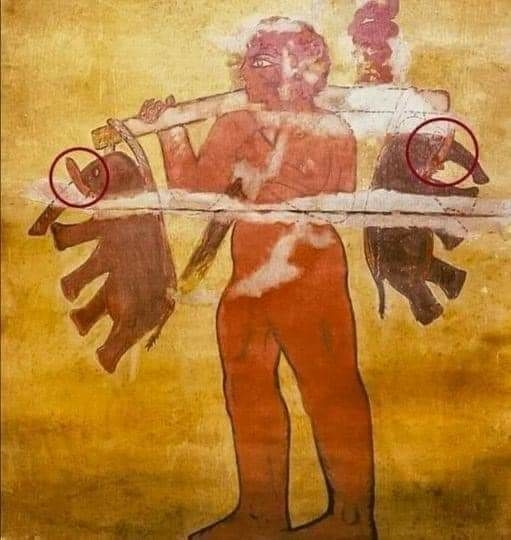






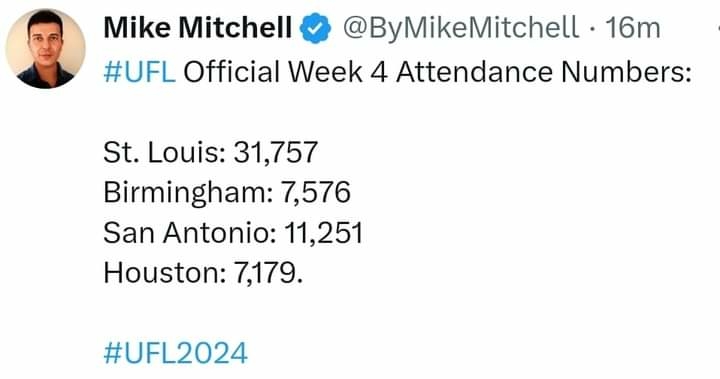




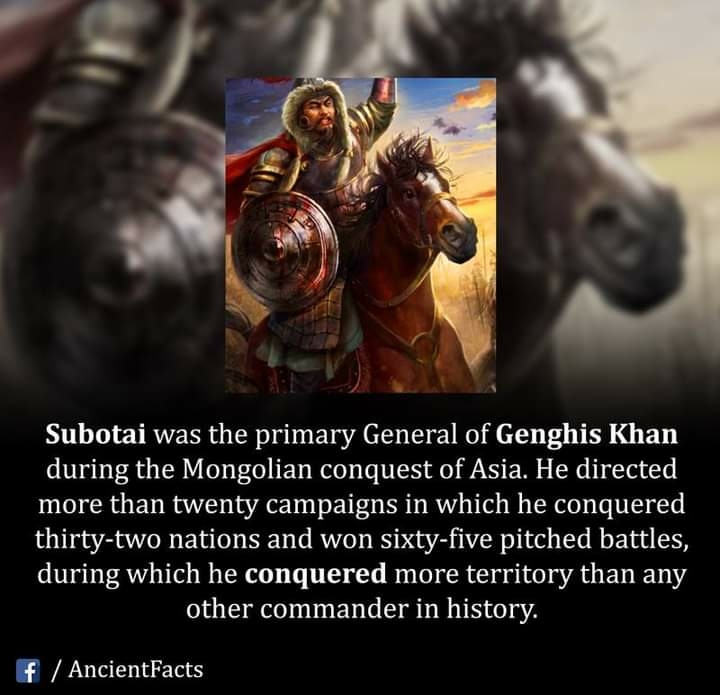




My Current Mood ... Part Deaux ...
in The Arcade
Posted